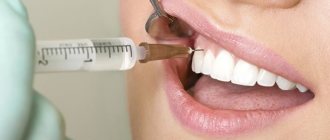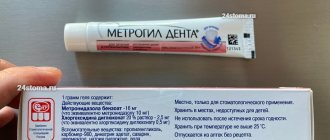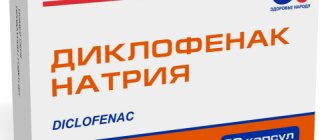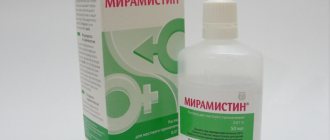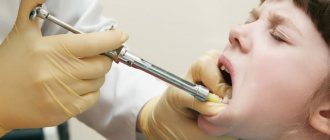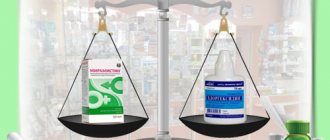Release form and components included in the composition
The drug belongs to the group of local anesthetics, including those used for painless treatment and tooth extraction, as well as other dental procedures. "Novocaine" is presented in different dosage forms:
- solution for injection 0.5% – colorless liquid, packaged in ampoules of 2, 5 and 10 ml. One package contains 10 ampoules, a scarifier or a special ampoule knife,
- solution 0.25% - sold in ampoules of 1, 2, 5 and 10 ml, 10 ampoules per package,
- solution 1% – packaged in ampoules of 1, 2 and 5 ml, 10 pieces per package,
- solution 2% - can be slightly colored, sold in 2 and 5 ml ampoule, 10 pieces each complete with a scarifier or ampoule knife.
The solution is packaged in ampoules.
The drug is based on the main active ingredient - procaine hydrochloride. 1 ml may contain 2.5; 5; 10 and 20 mg, depending on the concentration of the solution. The anesthetic is also presented in the form of suppositories - 100 mg each.
Possible complications and precautions
Despite the fact that infiltration anesthesia is widely used not only in dentistry, this method of pain relief sometimes causes complications:
- Hematoma, which may appear due to damage to a vessel by a needle.
- Rupture of dental ligaments or tooth deviation. This complication is a consequence of too rapid administration of the drug. To avoid such a pathology, it is necessary to observe the rate of administration of the anesthetic, which is 1 ml/15 seconds.
- Trauma to the nerve trunk, which provokes the development of traumatic neuritis.
- Periosteum injury. This complication is accompanied by pain and swelling.
- Development of infectious inflammation. The reason for this is usually the use of unsterile instruments.
- Injury to the muscle tissue located in the infratemporal fossa.
- Paralysis of facial nerve fibers. This condition goes away on its own within a few hours. With this complication, the lip may sag and eye reflexes may be absent.
- Poisoning of the body. The cause of intoxication is too large a volume of injected anesthetic solution or its injection into a blood vessel.
- Allergy. Manifests itself in the form of redness of the mucous membrane, swelling, and difficulty breathing.
In order to avoid complications of infiltration anesthesia, it is necessary to follow a number of rules:
- Conduct preliminary testing of the anesthetic to determine an allergic reaction.
- The dose of the administered anesthetic drug must correspond to the norm specified in the instructions. If the anesthetic does not have an effect, you need to replace it with another similar medication.
- Study contraindications to infiltration anesthesia and the drug used.
- When administering the anesthetic, do not make sudden movements so as not to injure the soft tissues.
- If you are afraid of the needle, you can use preliminary application anesthesia. Before making the injection, the doctor will treat the area of the mucous membrane with an anesthetic gel.
- In order to prevent the needle from entering a large vessel, the doctor pulls the syringe plunger towards himself. If blood appears in the syringe, this indicates an error. In such a situation, the specialist moves the needle to another place.
In order not to encounter the unpleasant consequences of infiltration anesthesia, you need to seriously approach the issue of choosing a clinic and specialist. After all, it is due to medical errors that most complications arise. In our clinic they are extremely rare. We are proud of the level of training of our specialists and invite you to undergo safe treatment in a comfortable environment.
Pharmacology and pharmacokinetics
The solution has a moderate anesthetic effect. Its active components reduce the excitability of the motor areas of the brain and myocardium, relieve spasms of smooth muscles. The drug also helps reduce blood pressure and arrhythmia, and helps relieve shock. However, exceeding the permissible dosages of Novocaine is fraught with impaired muscle conduction and cramps - we’ll talk about other possible complications a little later. In the meantime, it should be noted that the drug is poorly absorbed through the mucous membranes. Its active ingredients are excreted primarily by the kidneys - 80%.
Instructions for use in dentistry and recommended dosages
As part of infiltration anesthesia, 350-600 mg of a 0.25-0.5% solution is used. For pain relief using the Vishnevsky method, a solution is used in a concentration of 0.125-0.25%. For conduction, 25 ml of a 1-2% solution is enough, and for an epidural - 20-25 ml of a 2% solution1.
The drug is used for epidural anesthesia
In order to prolong the anesthetic effect, the doctor may additionally administer epinephrine 0.1%. The maximum permissible dose when performing infiltration anesthesia for an adult patient is 1 g of 0.25% solution, that is, no more than 500 ml, as well as 0.75 g of Novocaine 0.5%, or no more than 150 ml. The maximum dose for children should not exceed 15 mg per 1 kilogram of the child’s weight.
Novocaine solution d/in 0.5% 5 ml x10
Trade name: Novocaine
International name: Procaine&, (Procaine)
Pharmacological group: antiarrhythmic agent, local anesthetic
Pharmacological action: local anesthetic
Pharmacodynamics:
A local anesthetic with moderate anesthetic activity and a wide range of therapeutic effects. Being a weak base, it blocks Na+ channels, preventing the generation of impulses in the endings of sensory nerves and the conduction of impulses along nerve fibers. Changes the action potential in the membranes of nerve cells without a pronounced effect on the resting potential. Suppresses the conduction of not only pain, but also impulses of other modalities.
When absorbed and directly vascularly introduced into the bloodstream, it reduces the excitability of peripheral cholinergic systems, reduces the formation and release of acetylcholine from preganglionic endings (has some ganglion-blocking effect), eliminates spasm of smooth muscles, reduces the excitability of the myocardium and motor zones of the cerebral cortex.
When administered intravenously, it has an analgesic, antishock, hypotensive and antiarrhythmic effect (increases the effective refractory period, reduces excitability, automaticity and conductivity); in large doses it can disrupt neuromuscular conduction.
Eliminates descending inhibitory influences of the reticular formation of the brain stem. Inhibits polysynaptic reflexes. In large doses, it can cause convulsions. It has a short anesthetic activity (the duration of infiltration anesthesia is 0.5-1 hour).
When administered intramuscularly, it is effective in elderly patients in the early stages of diseases associated with functional disorders of the central nervous system (arterial hypertension, spasms of coronary and cerebral vessels, etc.).
Pharmacokinetics:
Subject to complete systemic absorption. The extent of absorption depends on the site and route of administration (especially vascularity and blood flow velocity in the area of administration) and the final dose (amount and concentration). It is quickly hydrolyzed by plasma and liver esterases to form 2 main pharmacologically active metabolites: diethylaminoethanol (has a moderate vasodilator effect) and PABA (is a competitive antagonist of sulfonamide chemotherapeutic drugs and can weaken their antimicrobial effect).
T1/2 - 30-50 s, in the neonatal period - 54-114 s. It is excreted primarily by the kidneys in the form of metabolites; no more than 2% is excreted unchanged.
Indications for use:
Infiltration (including intraosseous), conduction, epidural, spinal anesthesia, vagosympathetic cervical and perinephric blockade, retrobulbar (regional) anesthesia, terminal (superficial) anesthesia (in otorhinolaryngology)
Rectal: hemorrhoids, anal fissures.
Contraindications:
Hypersensitivity (including to PABA and other local anesthetic ethers).
For anesthesia using the creeping infiltration method: pronounced fibrous changes in tissues; for subarachnoid anesthesia - AV block, bleeding, arterial hypotension, shock, infection of the lumbar puncture site, septicemia.
Carefully:
Emergency operations accompanied by acute blood loss, conditions accompanied by decreased hepatic blood flow (for example, with CHF, liver diseases), progression of cardiovascular failure (usually due to the development of heart block and shock), inflammatory diseases or infection of the injection site, pseudocholinesterase deficiency, renal failure, children's age (up to 18 years), in elderly patients (over 65 years), seriously ill, debilitated patients,
pregnancy, childbirth.
For subarachnoid anesthesia: back pain, brain infections, benign and malignant brain tumors, coagulopathy, migraine, subarachnoid hemorrhage, arterial hypotension, skin paresthesia, psychosis, hysteria, non-contact patients, impossibility of puncture due to spinal deformity.
Dosage regimen:
For infiltration anesthesia 350-600 mg 0.25-0.5% solutions, for anesthesia according to the Vishnevsky method (tight creeping infiltration) - 0.125-0.25% solutions, for conduction anesthesia - 1-2% solutions (up to 25 ml), for epidural - 2% solution (20-25 ml), for spinal - 5% solution (2-3 ml), for terminal anesthesia (in otorhinolaryngology) - 10-20% solution.
To reduce absorption and prolong the effect of local anesthesia, an additional 0.1% solution of epinephrine hydrochloride is administered - 1 drop per 2-5-10 ml of procaine solution.
For perinephric blockade (according to A.V. Vishnevsky), 50-80 ml of a 0.5% solution or 100-150 ml of a 0.25% solution are injected into the perirenal tissue, and for vagosympathetic blockade - 30-100 ml of a 0.25% solution.
A 10% solution is also used for electrophoretic administration.
Higher doses for infiltration anesthesia for adults: the first single dose at the beginning of the operation is not higher than 1 g of 0.25% solution (500 ml) and 0.75 g of 0.5% solution (150 ml).
The maximum dose for use in children is up to 15 mg/kg.
Rectally.
Having previously freed the suppository from the contour packaging using scissors (cutting the packaging along the contour of the suppository), insert it deep into the anus (after a cleansing enema or spontaneous release of the intestines) 1-2 times a day.
Side effects:
From the central and peripheral nervous system: headache, dizziness, drowsiness, weakness, motor restlessness, loss of consciousness, convulsions, trismus, tremor, visual and auditory disturbances, nystagmus, cauda equina syndrome (leg paralysis, paresthesia), respiratory muscle paralysis, motor and sensory block, respiratory paralysis more often develops with subarachnoid anesthesia.
From the cardiovascular system: increase or decrease in blood pressure, peripheral vasodilation, collapse, bradycardia, arrhythmias, chest pain.
From the urinary system: involuntary urination.
From the digestive system: nausea, vomiting, involuntary bowel movements.
Blood disorders: methemoglobinemia.
Allergic reactions: skin itching, skin rash, other anaphylactic reactions (including anaphylactic shock), urticaria (on the skin and mucous membranes).
Other: return of pain, persistent anesthesia, hypothermia, impotence, during anesthesia in dentistry: numbness and paresthesia of the lips and tongue, prolongation of anesthesia.
Overdose:
Symptoms: pallor of the skin and mucous membranes, dizziness, nausea, vomiting, cold sweat, increased breathing, tachycardia, decreased blood pressure, even collapse, apnea, methemoglobinemia. The effect on the central nervous system is manifested by a feeling of fear, hallucinations, convulsions, and motor agitation.
Treatment: maintaining adequate pulmonary ventilation with oxygen inhalation, intravenous administration of short-acting drugs for general anesthesia, in severe cases - detoxification and symptomatic therapy.
Interaction:
Local anesthetics enhance the inhibitory effect on the central nervous system of other drugs.
Anticoagulants (ardeparin sodium, dalteparin sodium, danaparoid sodium, enoxaparin sodium, heparin, warfarin) increase the risk of bleeding.
When treating the injection site of a local anesthetic with disinfectant solutions containing heavy metals, the risk of developing a local reaction in the form of pain and swelling increases.
When using local anesthetic drugs for spinal and epidural anesthesia with guanadrel, guanethidine, mecamylamine, trimethaphan, the risk of developing a sharp decrease in blood pressure and bradycardia increases.
Use with MAO inhibitors (furazolidone, procarbazine, selegiline) increases the risk of developing a pronounced decrease in blood pressure.
Strengthen and lengthen the effect of muscle relaxant drugs.
When procaine is prescribed together with narcotic analgesics, an additive effect is noted, which is used during spinal and epidural anesthesia, while respiratory depression increases.
Vasoconstrictors (epinephrine, methoxamine, phenylephrine) prolong the local anesthetic effect.
Procaine reduces the antimyasthenic effect of drugs, especially when used in high doses, which requires additional correction in the treatment of myasthenia gravis.
Cholinesterase inhibitors (antimyasthenic drugs, cyclophosphamide, demecaria bromide, ecothiopathy iodide, thiotepa) reduce the metabolism of local anesthetic drugs.
Procaine metabolite (PABA) is an antagonist of drug sulfonamides.
Special instructions:
Patients require monitoring of the functions of the cardiovascular system, respiratory system and central nervous system.
It is necessary to discontinue MAO inhibitors 10 days before the administration of a local anesthetic.
During the treatment period, care must be taken when driving vehicles and engaging in other potentially hazardous activities that require increased concentration and speed of psychomotor reactions.
Contraindications for use
The drug has an impressive list of contraindications and restrictions for use. Thus, “Novocaine” and all its procaine-based forms are not used if the patient has hypersensitivity and allergies to the components included in the composition. As for whether Novocain can be given to a child, it is important to pay attention here: this anesthetic is prohibited for children under 12 years of age.
The drug should not be used by children under 12 years of age
Increased caution is required in cases of emergency surgical interventions with high rates of blood loss, as well as conditions of chronic, acute and progressive heart failure, liver and kidney diseases, pseudocholinesterase deficiency, age from 12 to 18 years, elderly age from 65 years, severe pathological conditions, pregnancy , childbirth, breastfeeding.
What are the possible side effects?
There is an opinion that Novocain can cause epilepsy, but this is not entirely true. This anesthetic belongs to the category of drugs that, under certain conditions, can provoke epileptic seizures in patients with epilepsy or hypersensitivity to the active substances.
According to the instructions for use, this painkiller can also lead to disorders of the cardiovascular system, including sudden surges in pressure, bradycardia, arrhythmia, chest pain, and collapse. Among other adverse reactions, experts identify headache and dizziness, weakness, trismus, as well as malfunctions of the hematopoietic organs. Allergic manifestations include skin itching, rashes, urticaria and anaphylactic reactions.
Side effects may include headache and dizziness
How Novocain interacts with other medications
Other anesthetic drugs increase CNS depression. Anticoagulants contribute to blood clotting disorders, and the simultaneous use of disinfectant solutions with heavy metals significantly increases the likelihood of developing swelling and pain.
MAO inhibitors reduce blood pressure. When using Novocaine simultaneously with narcotic analgesics, an additive effect is observed. Vasoconstrictors, such as epinephrine (synthesized adrenaline), help prolong the anesthetic effect.
Interactions with other drugs should be considered before use.
What is the difference between Novocaine and Ultracaine?
Novocaine is one of the oldest painkillers used in dental practice. It was first synthesized by the German chemist Alfred Einhorn back in 1898. At that time, it became the best replacement for cocaine, which had previously been used for pain relief.
But now Novocain is used extremely rarely for local anesthesia. It has a very long latency period, that is, the effect after its administration occurs only after 10,15 or even 20 minutes. Modern drugs, like Ultracaine, begin to act after 2-3 minutes, and this is a significant difference. In addition, “Ultracain” is almost 5 times stronger than “Novocain”, it is quickly destroyed and eliminated from the body, does not inhibit the functioning of internal organs and systems, does not cause such serious adverse reactions, therefore there are significantly fewer contraindications to it.
"Ultracain" is almost 5 times stronger than "Novocain"
“I had my canals treated with septanest, in my opinion it was not with procaine, but with articaine. This is a more modern drug, it is more effective and less harmful to the body. In general, I heard about Novocaine that it is already a thing of the past. It is no longer used in normal private dentistry. Therefore, if you want to treat your teeth without pain, you will have to choose a normal clinic that has good modern drugs.”
Marina_1987, from correspondence on the forum www.32top.ru
"Ultracaine" is used only for injection pain relief. It is often administered together with vasoconstrictors to prolong the effect, but they can cause arrhythmia and increase blood pressure. Therefore, the doctor combines medications individually for each clinical case.
Operating principle of infiltration anesthesia
Infiltration anesthesia is one of the methods of pain relief.
It involves the introduction of an anesthetic into the skin or mucous membrane, as a result of which nerve impulses are blocked. This type of pain relief is known as “freezing.” The drug used by the doctor suppresses the nerve impulse that goes from the pulp to the brain. Therefore, the patient loses sensation in some parts of the face or mouth, such as the cheek, lip or tongue. Numbness occurs in the part of the face where the anesthetic is injected. The anesthetic is administered by injection. First, the drug enters a certain area under the skin, and then is distributed among the cells. The maximum duration of the anesthetic dose is one hour. Gradually the medication breaks down and sensitivity returns. If necessary, another dose of the drug may be administered. The anesthesia process is under the supervision of a specialist.
Distinctive features of infiltration anesthesia
Infiltration anesthesia differs from other methods of pain relief by its immediate action and the exact duration of the analgesic effect. The components of the drug are very quickly eliminated from the body and do not have a negative effect on it. Infiltration anesthesia is also characterized by a low concentration of medications used.
Indications for the use of infiltration anesthesia in dentistry
- Treatment of dental diseases (caries, pulpitis, periodontal inflammation).
- Surgical treatment of periodontal diseases (curettage, gum plastic surgery, elimination of defects and tissue regeneration).
- Dental prosthetics without pulp removal (installation of crowns, inlays, bridge structures).
- Treatment with surgical intervention (tooth extraction, implantation, tissue expansion, emptying of purulent cavities, opening of phlegmons, excision of cysts).
Contraindications
- An allergic reaction to a pain reliever.
- Mental disorders of the patient that prevent constructive communication with him.
- Excessive psychomotor agitation.
- Children under 10 years of age (relative contraindication).
- Asthma and other pathologies of the respiratory system.
- Using muscle relaxants to relax muscles.
- The presence of scars on the mucous membranes of the oral cavity, which prevent the uniform distribution of the drug.
- Inflammatory or purulent process in the area of anesthetic administration.
- The presence of malignant neoplasms or tumors suspected of cancer.
- Refusal of the patient to use this method of anesthesia.
Storage conditions, expiration date and prices in Moscow pharmacies
“Novocaine” in the form of a 0.5% injection solution will cost from 40 to 60 rubles per 200 ml bottle. To buy the drug at a pharmacy, you will have to present a prescription from a doctor. Ampoules should be stored in a dry, dark place out of reach of children and pets. According to the instructions, the shelf life is 3 years.
Before administering an anesthetic, the patient must warn the doctor about possible allergic reactions or chronic pathologies in his medical history. The specialist selects anesthesia, taking into account all the available nuances. Novocaine was one of the first painkillers to become widely popular in dental practice. However, today dentists have better, more effective and safe means in their arsenal for painlessly carrying out procedures of any complexity.
1Rabinovich S.A., Anisimova E.N., Zoryan E.V. Main directions of drug therapy for pain syndrome in dentistry, 2001.
Local anesthesia in pediatric dentistry. Application technique, safety
What is used and how does it affect the body? Why is anesthesia necessary and is it mandatory? I hope you will find answers to these and other questions in this article and, when you bring your child to an appointment, you will better understand the doctor’s decision.
So, let's start, as usual, from the beginning. Local anesthesia is a method of pain relief that blocks nerve impulses from the surgical site by interrupting nerve transmission. For this purpose, pharmacological drugs - local anesthetics - are used.
How long ago did this method begin to be used for dental procedures? Not so long ago, in 1885, infiltration anesthesia for dental treatment was first performed by Landerer, Witzel, and Voltaire in Germany. Novocaine was synthesized in 1905. And in 1921, the first carpule syringe with the ability to conduct an aspiration test was invented in Cook's laboratory. Today, dentists around the world have been using anesthesia using a carpule syringe for 100 years.
Currently, Articaine anesthetics with a vasoconstrictor are used. They are the most effective and safe. An allergic reaction to the anesthetic is certainly possible. However, a true allergy to the anesthetic itself is quite rare. Most often, negative reactions are associated with:
- Vasoconstrictor as part of the anesthetic. This is often not an allergy, but reactions such as increased heart rate, “fainting”
- Preservatives and stabilizers in the composition of the drug in the capsule, which are added to extend the shelf life of the anesthetic
In order to cope with the negative reaction that has arisen, there are always medications and first aid supplies in each office. And in order to prevent them, it is enough to carefully collect anamnesis from the parents and, if you are prone to allergies, carry out treatment “under the guise” (having previously taken) antihistamines.
As elsewhere, there are exceptions and there are health features, and they are necessarily taken into account by the doctor when choosing a carpule of local anesthetic and the method of its use.
Treatment for children differs somewhat depending on the age category and the tooth itself that needs to be anesthetized. We will analyze separately milk and permanent teeth, as well as some features of children’s age groups.
So, baby teeth. They have a similar structure to permanent ones; they have a “nerve” inside - pulp and long roots. They differ from permanent teeth in that the layers of hard tissue in them are thinner than in permanent teeth, and the pulp (“nerve”), on the contrary, takes up more space. That is why if caries has developed in a baby tooth, in a short period of time (3 months) it can develop into pulpitis. You need to know all this in order to understand: baby teeth are sensitive! Yes, some children have a high enough threshold for pain sensitivity so that treatment of caries of a baby tooth is painless for them. Often the parents of such children say something close to: “I was treated normally without an injection when I was a child.” In such children, theoretically, uncomplicated caries of baby teeth can be treated without using anesthesia. BUT!
Those “buts” again.
In the 21st century in Russia and not only the standard in the treatment of dental caries (both primary and permanent) is the use of composite materials (light-curing composite). They have many advantages compared to materials that were used previously. However, for their high-quality use, it is necessary to achieve COMPLETE DRYness of the enamel of the tooth being restored. How to achieve it?
- Isolation with a rubber dam (the same “lock” and “handkerchief” on the tooth). This allows you to dry the tooth and it will not get wet either by a child accidentally licking it or by condensation formed during breathing. Installing a rubber dam clamp is quite unpleasant and the gums on all sides of the isolated tooth must be numbed.
- Ensure that there is no leakage of gingival fluid or blood from the adjacent gum. This is exactly what the vasoconstrictor does in the anesthetic. That is, having given anesthesia, we locally constrict the blood vessels near the desired tooth. We get “dry” gums.
Total. To treat caries of primary teeth, we perform anesthesia, MAINLY to ensure the quality of treatment and long-term restoration. In this case, anesthesia of the tooth itself is secondary.
Of course, if we are talking about the treatment of complicated caries (pulpitis), then anesthesia is also needed so that the tooth itself does not feel anything, because in this case we are already working with the pulp (“nerve”).
For the treatment of permanent teeth, the question of priorities changes somewhat, since for most children it is still painful to treat permanent teeth. But in general, anesthesia is needed for the same purposes.
The decision to use or not to use local anesthesia for each child is made by the doctor together with the parent after a detailed clarification of the characteristics of the general health and psyche of the child.
We decided that this was really necessary. How to administer anesthesia to a small child? How do doctors do this? Each child’s psychological maturity is individual. Therefore, the schemes proposed below are only indicative. Up to 3.5 years, the use of local anesthesia has not been studied, therefore, up to this age, treatment under general anesthesia is considered the safest. However, this is another topic.
So:
3.5 - 6 years
To facilitate the perception of all dental procedures, fixate attention on the cartoon and increase the time of “quiet lying” in the chair, the baby can be offered support with nitrous oxide (supplied through a mask, the baby is conscious). This is also a separate topic for conversation, so we won’t dwell on it.
When the child lies in a chair, puts on glasses, watches a cartoon and is mentally prepared for the fact that he has come for treatment, the doctor describes to him the process of administering local anesthesia. Analogies are usually drawn with “freezing”. Initially, we do topical anesthesia, describing it as “I’ll anoint you with magic jam”, “I’ll apply cold gel”. This is necessary to initially reduce the sensitivity of the mucous membrane.
Next, we inject the needle and inject the first portion of anesthetic, literally “drops”. We describe it as “I’ll put a piece of ice”, “we’ll enchant a microbe like Elsa with the cold”, “I’ll drop a very cold drop”, “we’ll start sculpting Olaf and it’ll get cold.” At this moment, if the child does not cry out and does not turn away, so as not to carry out unnecessary injections, we continue the slow injection of the anesthetic, describing it as “rolling a snowball”, “starting to sculpt a snowman”, “making a cold pad”. If the baby screams and turns his head away, then we limit ourselves to the first drop and calm him down, praise him, explain that “it was the coldest, there was a fluffy snowball left.” After you have calmed down, we continue injecting the anesthetic into the same place where you started. It is no longer so painful, since the first drop has worked.
The following is important at the moment: parents should not use the words “it doesn’t hurt”, “it’s not scary”, “just a prick”, “be patient with the prick”, etc. We believe that many kids can muster the will to endure an injection, just like in a clinic for a blood collection or vaccination.
But we ask you, do not forget, after those injections the baby goes home in 2 minutes! His mother immediately hugs him, praises him and consoles him! And in our chair, the “prick” is just the beginning of treatment. And by asking the child to “just be patient with the injection,” even if he can do it, we give him false hope that after this he will get up right away! That's it, he suffered. He can go. Half of the child’s psychological readiness pool is lost due to one not entirely appropriate phrase.
A child under stress does not perceive the particle “not”. When you say “it doesn’t hurt,” the child hears “it hurts.” Therefore, doctors try to describe what is happening in other words. We replace “painful” with “unpleasant”, “hard”, “cold”. Children vividly imagine these concepts and can handle them much easier than a “prick”.
Dear parents! I hope it is now clear that we do not want to deceive your children, but in order for them to allow us to treat them for 30-40 minutes, we must be extremely careful in our expressions, tactful and sensitive.
6-12 years
In general, the concept of anesthesia is the same. The difference is that children of this age group can ask directly: “Will there be an injection?” In this case, our task is to be honest, but to help the child cope with fear. For this, different comparisons are also used. Here parents can help a lot by whispering in the doctor’s ear, “It’s better not to tell him that this is an injection, play around with it somehow,” or vice versa, “She hates lies, it’s better to show her the syringe.”
12-18 years old
The concept has not changed. Most often, children are prepared for treatment and normally perceive the need for local anesthesia. But in this age category, we can ask the child himself which moment is most unpleasant for him, what to emphasize. Some people do not like the taste of topical anesthetic, and they are willing to endure a more painful needle injection, just not for this taste. Someone asks to treat him “like a baby.” Some people want their assistant to wash it with water at the same time, then it will hurt less, etc.
Let's summarize.
In most cases, local anesthesia is needed to treat children. The child must be prepared for treatment (either adaptation, sedation, or be psychologically mature). Then, acting as a child-parent-doctor team, we can successfully carry out treatment in the most comfortable way for the child. Do not forget that the feeling of numbness goes away from 40 minutes to 1.5-2 hours, so we always remind: “Please watch your lip during this time, do not let the baby bite it!”
